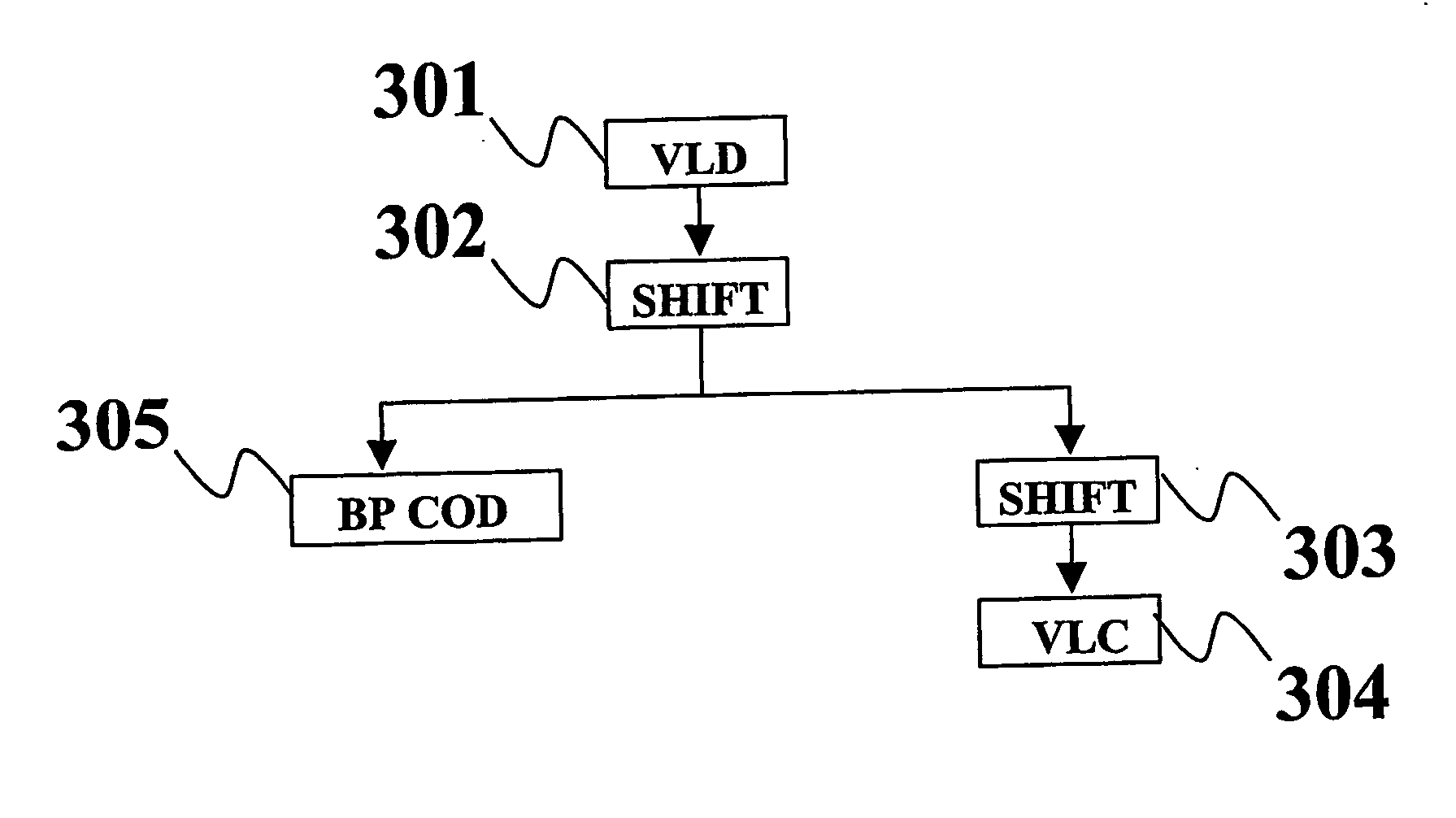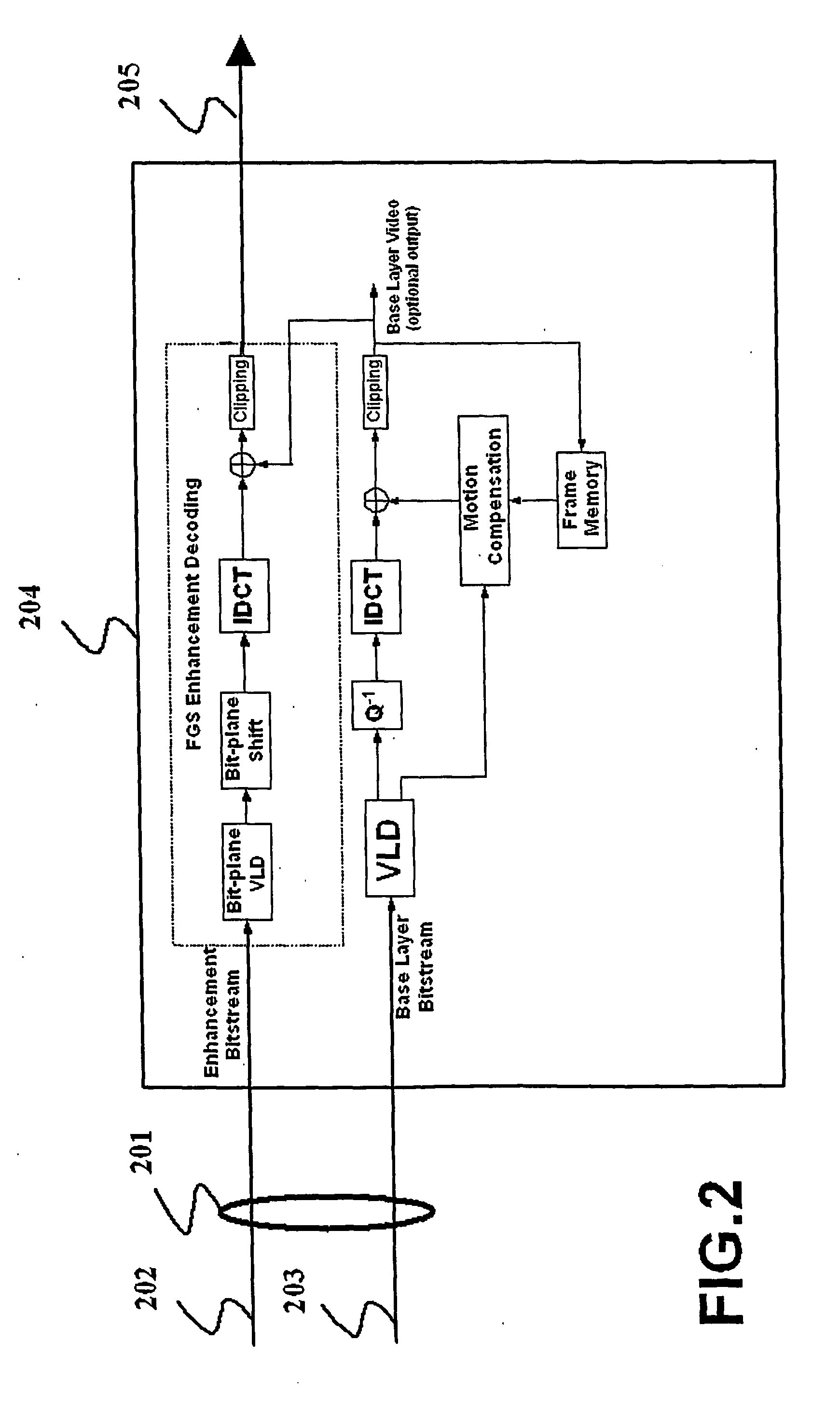Non-scalable to scalable video conversion method, scalable to non-scalable video conversion method
- Summary
- Abstract
- Description
- Claims
- Application Information
AI Technical Summary
Benefits of technology
Problems solved by technology
Method used
Image
Examples
Embodiment Construction
[0087] In the following, the invention will be described assuming that video signals are block-based coded (for example derived from a MPEG-based video coding), blocks comprising DCT (Discrete Cosine Transform) coefficients. However, this method is not limited to video signals comprising DCT coefficients, but could also be applied to video signals comprising wavelet coefficients, or coefficients derived from another video coding.
[0088] Similarly, the invention will be described assuming that the input coefficients of video signals are variable-length coded coefficients. A variable-length decoding step is thus done in that case. However, this method is not limited to such input coefficients and could also be applied to input coefficients which are not variable-length coded. A variable-length decoding step would thus not be useful in that case.
[0089]FIG. 3 is a diagram depicting the steps of a method according to the invention for generating a scalable coded video signal from a non-...
PUM
 Login to View More
Login to View More Abstract
Description
Claims
Application Information
 Login to View More
Login to View More - R&D
- Intellectual Property
- Life Sciences
- Materials
- Tech Scout
- Unparalleled Data Quality
- Higher Quality Content
- 60% Fewer Hallucinations
Browse by: Latest US Patents, China's latest patents, Technical Efficacy Thesaurus, Application Domain, Technology Topic, Popular Technical Reports.
© 2025 PatSnap. All rights reserved.Legal|Privacy policy|Modern Slavery Act Transparency Statement|Sitemap|About US| Contact US: help@patsnap.com



